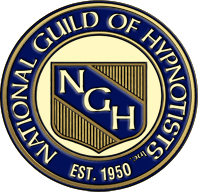
In the vast realm of therapeutic techniques, two stand out for their unique approaches to treating trauma: Hypnotherapy and EMDR. Both have garnered attention for their effectiveness, but how do they compare?
Let’s explore more to understand these two powerful tools, the similarities and the differences.
In the process of letting go, you will lose many things from the past, but you will find yourself.
Deepak Chopra
What Is Hypnotherapy?
Hypnotherapy, which takes on two forms clinical hypnosis and regression hypnotherapy, are a form of therapy that utilizes a trance-like state to tap into the subconscious mind.
This relaxed state allows individuals to explore past experiences, and access core memories that have played a significant role in the mind, in a safe environment.
By bypassing the conscious mind, hypnotherapy can access and address deep-seated beliefs, emotions, and patterns that might be challenging to confront in a regular waking state.
Historical Background
The origins of hypnotherapy can be traced back to ancient civilizations, where priests and shamans used trance states for healing rituals. In the modern era, the swinging pendulum and the pocket watch became iconic symbols of inducing hypnosis.
Over the years, hypnotherapy has transitioned from being perceived as a mystical or magical practice to a scientifically-backed therapeutic tool.
Pioneers like Franz Mesmer and James Braid played significant roles in shaping the understanding and practice of hypnotherapy.
The Science Behind Hypnosis
Many people associate hypnosis with stage shows or believe it’s a form of sleep. However, hypnosis is a heightened state of focus and suggestibility.
Contrary to popular belief, a state of hypnosis is not about mind control or being unconscious. It’s an altered state where the unconscious mind becomes more receptive to change.
In fact most of our waking experience we often operate in a state of trance regularly running old patterns and cycles in our life and in hypnosis we actually are waking up to what those are and where they come from.
Brain imaging studies also show these changes in brain activity during hypnosis, particularly in areas related to attention, perception, and awareness.
Common Applications
Hypnotherapy is versatile and can address a myriad of issues. It has been used to help people quit smoking, lose weight, and overcome phobias but it can do much more than just that.
From treating bad habits and panic attacks to addressing traumatic events, to going beyond that to accessing ones highest potential, hypnotherapy has a broad spectrum of applications.
Moreover, it’s been effective in managing pain, improving sleep, and even enhancing performance in sports or academics. The power of suggestion, when the mind is in a receptive state, can lead to profound changes in behavior, emotions, and thought patterns.
It gives the ability to see things from an entirely new perspectives which in turn has the ability to shift the world around you as you reflect this new state of being.
If you want to change the world, start with yourself. The outer world is a reflection of the inner world.
Mahatma Gandhi
What is EMDR?
EMDR, which stands for Eye Movement Desensitization Reprocessing, is a form of therapy specifically designed for the treatment of trauma.
Developed in the late 1980s by psychologist Dr. Francine Shapiro, it’s a unique method that’s gained significant recognition among mental health professionals.
EMDR has been endorsed by several health organizations worldwide, including the American Psychiatric Association and the World Health Organization, for its effectiveness in treating trauma.
Definition and Origins
EMDR is an integrative psychotherapy approach that combines elements from various therapeutic disciplines. Its primary focus is on the treatment of trauma-related disorders.
Dr. Francine Shapiro made the groundbreaking discovery during a walk in the park when she realized that certain eye movements could reduce the intensity of disturbing thoughts.
This observation led to the development of EMDR as a structured eight-phase approach to address the past, present, and future aspects of traumatic memories.
The Process
The core of EMDR therapy involves the targeted processing of traumatic memories using bilateral stimulation, most commonly in the form of guided eye movements.
The therapist directs the client to recall distressing images while simultaneously undergoing bilateral sensory input, such as side-to-side eye movements.
This process helps the brain reprocess traumatic memories, and over time, the distressing memories lose their intensity, allowing individuals to integrate and understand them more healthily.
Typical Uses
EMDR has been extensively researched and found effective for the treatment of trauma.
From post-traumatic stress disorder (PTSD) resulting from major traumatic events like wars, natural disasters, and personal assaults to other trauma-related conditions such as anxiety, phobias, and depression, EMDR has become a go-to for many therapists.
It’s particularly beneficial for individuals who have difficulty talking about their traumatic experiences, as it doesn’t require them to go into detail about their trauma.
Instead, EMDR focuses on the emotional and physiological sensations associated with the trauma, helping individuals process and release these distressing memories.

Key Similarities Between Hypnotherapy And EMDR
Pain is the touchstone of all growth.
Bill W.
Both hypnotherapy and EMDR offer different approaches to healing, yet they share some common ground, especially when addressing traumatic memories.
These therapies have been transformative for many, offering relief from the burdens of past traumas and paving the way for a brighter, more balanced future.
Alternative To Talk Therapy
Traditional talk therapies, such as cognitive-behavioral therapy (CBT) and psychodynamic therapy, have been the mainstay in psychotherapy for decades.
They involve discussing and analyzing one’s feelings, behaviors, and thought patterns. However, not everyone finds verbalizing their trauma beneficial or even possible. Here’s where both hypnotherapy and EMDR come into play.
They offer a new way to address past trauma without the necessity of extensively talking about it.
Instead of relying solely on verbal communication, these therapies use techniques that can access deeper layers of the mind, making them particularly useful for those who might find it challenging to articulate or relive their traumatic experiences through words alone.
Focus On The Subconscious
The subconscious mind is like an iceberg’s submerged portion, holding memories, beliefs, and experiences that aren’t always accessible to our conscious mind.
Both hypnotherapy and EMDR tap into this vast reservoir. Hypnotherapy uses a trance-like state to access the subconscious, allowing individuals to confront and reframe traumatic memories in a safe environment.
On the other hand, EMDR uses bilateral stimulation, often through guided eye movements, to help the brain reprocess traumatic memories, making them less distressing.
By targeting the subconscious, both therapies aim to address negative beliefs, unwanted thoughts, and deep-seated emotions stemming from traumatic experiences.
Effectiveness
The efficacy of both hypnotherapy and EMDR is well-documented.
Scientific research, including studies published in the American Journal of Hypnosis, has shown the benefits of hypnotherapy in various areas, from pain management to anxiety reduction.
Similarly, the American Psychological Association and other prominent health organizations have endorsed EMDR for its effectiveness in treating post-traumatic stress disorder (PTSD) and other trauma-related conditions.
Numerous testimonials and case studies further attest to the transformative power of these therapies.
It’s worth noting that while both methods are effective, individual experiences may vary, and what works best often depends on the person’s unique needs, preferences, and the nature of their trauma.
Key Differences Between Hypnotherapy And EMDR
Pain introduced you to your highest self.
Paul Domenick
While they share similarities, the key differences between these therapies lie in their techniques, goals, and applications.
Both have proven to be effective in their own right, but understanding their distinct characteristics can help individuals make informed decisions about which therapy might be best suited for their needs.
Techniques Used
At the heart of each therapy lies a unique approach. Hypnotherapy, as the name suggests, revolves around hypnosis.
A trained therapist guides the individual into a hypnotic state, which is often described as a deep trance or state of relaxation. This state allows the therapist to access the subconscious mind, bypassing the conscious mind’s usual barriers.
Techniques can include guided imagery, suggestions, or even regression to earlier life experiences. EMDR, on the other hand, stands for Eye Movement Desensitization Reprocessing. It employs a specific method involving eye-movement desensitization.
During an EMDR session, the therapist directs the individual to recall distressing images or memories while simultaneously guiding them through specific eye movements or other forms of bilateral stimulation.
This process is believed to facilitate the brain’s natural healing process, allowing it to reprocess traumatic memories.
Goals
While both therapies aim to heal and provide relief, their primary goals can differ. The main goal of EMDR therapy is to process and integrate traumatic memories, making them less distressing and more like ordinary memories.
The therapy seeks to change the way these memories are stored in the brain, reducing their negative impact. Hypnotherapy, on the other hand, has a broader scope.
While it can certainly address traumatic memories, it is not always necessary to go into them once again. New tools and resources can also be used to change behaviors, beliefs, and emotions related to the issue.
One may experience new perspectives and discoveries surrounding what brought them to this point as well as upgraded insights and energies that are available.
Releasing the charge of the emotions through the energetic body through hypnosis and somatic clearing also provides an outlet for trauma to discharge in a holistic approach so that the mind-body-spirit can come back into alignment.
Applications
In terms of their primary applications, EMDR is predominantly used for trauma and trauma-related conditions. It has been extensively researched and found effective for conditions like post-traumatic stress disorder (PTSD).
Hypnotherapy, with its versatile nature, can address a wide variety of mental health conditions and can support a holistic approach that can be used on multiple levels including trauma .
This includes accompanying challenges like low self-esteem , phobias, anxiety, and panic attacks, pain management, sleep improvement, and more.
Hypnotherapy also provides techniques and tools such as breath work and somatic energy clearing and healing that provide a release of energy in the body.
It’s worth noting that the success of both therapies often hinges on the skill of the therapist and the individual’s openness in the process.
Clinical Efficacy: Which Is More Effective?
You have power over your mind – not outside events. Realize this, and you will find strength.
Marcus Aurelius
The debate about the effectiveness of hypnotherapy versus EMDR is ongoing, but both have their merits. As with many therapeutic approaches, the answer isn’t black and white.
Instead, it often depends on individual factors, the nature of the trauma, and the specific goals of therapy.
Research Findings
The scientific community has given considerable attention to both hypnotherapy and EMDR, leading to a wealth of research on their efficacy.
Both therapies are considered evidence-based treatments, meaning they have been rigorously tested and found effective in controlled clinical trials.
The World Health Organization (WHO) and the Department of Veterans Affairs, among other reputable institutions, have endorsed the use of EMDR for PTSD, highlighting its effectiveness in treating trauma.
Similarly, studies on hypnotherapy have shown its benefits across a range of issues, from anxiety and pain management to addiction and weight loss.
More recently hypnotherapy has been used as an advanced technology for tapping into and accessing more resources, tools, and healing for transformational growth.
This means that one can resource and look at pain as a catalyst for deeper healing and purpose which can ultimately be used as a tool for awakening and healing beyond the initial sensitizing event.
Case Studies
Beyond the realm of controlled studies, real-life examples provide a window into the transformative power of these therapies.
Individuals who have undergone EMDR often report a significant reduction in the distress associated with traumatic memories, with some even stating that the memories feel distant or detached after treatment.
Hypnotherapy clients, on the other hand, often describe profound insights, shifts in perspective, and positive behavioral changes following sessions.
These real-life testimonials underscore the potential of both therapies to facilitate deep healing and change.
Factors Influencing Effectiveness
While both therapies are effective, several factors can influence the outcome of treatment. The client’s openness to the process, their rapport with the therapist, and their commitment to healing are pivotal.
Additionally, the specific nature of the trauma or issue being addressed can influence which therapy might be more beneficial.
For instance, someone with deep-seated childhood trauma might benefit from the regression techniques used in hypnotherapy, while an individual with acute PTSD from a recent event might find rapid relief with EMDR.

Making the Right Choice: Hypnotherapy or EMDR?
Turn your wounds into wisdom.
Oprah Winfrey
Choosing between hypnotherapy and EMDR boils down to individual needs and the nature of the trauma or what you are looking to shift.
Both therapies offer powerful avenues for healing, but the best choice often depends on personal preferences, the specific challenges faced, and the desired outcomes from therapy.
Individual Needs
Everyone’s experience with pain and trauma is unique, and so is their path to healing.
Some individuals might find the state of hypnosis more comforting, allowing them to access a peaceful state and then delve deep into their subconscious for help, healing, insight, and resources in a safe and loving environment.
The trance-like state can provide a sense of calm, making it easier to access and see memories from a different perspective.
On the other hand, others might resonate more with the EMDR method, especially if they are looking for a therapy that doesn’t require them to unpack the meaning and go deeper than the trauma itself.
The structured approach of EMDR, with its focus on reprocessing memories, can be particularly appealing to those who want tangible, step-by-step progress.
Consulting Professionals
Before making a decision, it’s crucial to consult with mental health professionals. EMDR therapists and clinical hypnotherapists are trained to assess an individual’s needs and recommend the most suitable approach.
They can provide insights into how each therapy works, what to expect during sessions, and the potential benefits and challenges.
An initial consultation can also help establish rapport, which is a vital component of successful therapy.
Personal Comfort
Ultimately, the success of therapy hinges on the individual’s comfort with the chosen method. It’s essential to listen to one’s intuition and assess how they feel about each approach.
Some might be drawn to the introspective nature of hypnotherapy, while others might appreciate the active processing involved in EMDR.
Feeling safe, understood, and supported is paramount. If one approach doesn’t resonate, it’s okay to explore other options. After all, therapy is a deeply personal journey, and finding the right fit can make all the difference.
The ultimate goal after all is always finding peace and healing within.
Common Myths And Misconceptions
Every adversity, every failure, every heartache carries with it the seed of an equal or greater benefit.
Napoleon Hill
With any form of therapy come myths and misconceptions that can cloud judgment and deter individuals from seeking the help they need.
Both hypnotherapy and EMDR, despite their proven efficacy, are not immune to such misconceptions.
Let’s address some of the most common myths surrounding these therapies.
Debunking Hypnosis Myths
- Mind Control: One of the most prevalent myths about hypnosis is that it’s a form of mind control or that individuals can be made to do things against their will. In reality, hypnosis is a collaborative process, and the individual remains in control throughout the session. Most sessions clients will be taking throughout the process and the client can always open their eyes and end the experience at any time they wish.
- Never-ending Trance: Another misconception is that one can get “stuck” in a hypnotic state. This is not true. Even if the therapist were to leave the session abruptly, the individual would either drift into natural sleep or awaken on their own. It is also important to note that hypnosis is just a restful state where one is not asleep but not completely awake. This is a state that everyone enters everyday upon waking and before going to bed so you are familiar with this state and know it very well.
- Memory Fabrication: Some believe that hypnotherapy can lead to false memories. While hypnosis can enhance recall, ethical therapists ensure that suggestions made don’t lead to the creation of untrue memories.
- Weak-willed Individuals: There’s a myth that only gullible or weak-willed individuals can be hypnotized. In fact, most people can enter a hypnotic state, and it’s often those with a strong will and ability to focus who respond best to hypnotherapy, all you need is an open mind and a willing heart to be able to tap into the true power that you possess inside.
Addressing EMDR Concerns
- Just Eye Movements: Some believe that EMDR is just about moving the eyes back and forth. While bilateral stimulation, often through guided eye movements, is a component, EMDR is a multi-phase approach that addresses the entire traumatic experience.
- Quick Fix Solution: Another misconception is that EMDR offers instant results. While some individuals experience relief after a few sessions, the number of sessions required varies based on the individual and the nature of the trauma.
- Only for Trauma: While EMDR is renowned for treating trauma, it’s also effective for other issues like anxiety, depression, and phobias.
- Memory Erasure: Some fear that EMDR will erase their memories. In reality, EMDR helps reprocess traumatic memories, reducing their emotional charge, but the memories themselves remain.
How To Find A Qualified Therapist
Finding the right therapist is crucial for a successful therapeutic journey. The bond between a therapist and client, often referred to as the therapeutic alliance, plays a significant role in the outcome of therapy.
Here are some steps and considerations to keep in mind when searching for a qualified therapist:
Credentials Matter
- Education and Training: Ensure the therapist has the necessary qualifications. For instance, a clinical hypnotherapist should have undergone specific training in hypnotherapy from a recognized institution. Similarly, EMDR practitioners should have completed EMDR training from an accredited program and be a licensed therapist.
- Licensing & Certifications: It’s essential to verify that the therapist is licensed or certified to practice in your state or region. Licensing ensures that the therapist has met the required standards of education and training.
- Specializations: Some therapists might have specializations or additional certifications in areas like trauma, addiction, or child therapy. Depending on your needs, such specializations can be beneficial.
- Reviews & Testimonials: Be sure to check out other clients experiences with the therapist you are looking to work with.
Questions to Ask:
- Approach and Techniques: Ask the therapist about their therapeutic approach and the techniques they use. This can give you an idea of what to expect during sessions.
- Logistics: Discuss practical aspects like session duration, fees, and appointment availability.
- Confidentiality: Ensure that the therapist adheres to strict confidentiality guidelines.
- Success Stories: While maintaining confidentiality, a therapist might share general success stories or testimonials (without revealing personal details) to give you an idea of how they can help.
Resources
- Professional Organizations: Organizations like the American Psychiatric Association, the American Psychological Association, and the EMDR International Association offer directories to find professionals in various specialties.
- Referrals: Personal recommendations from friends, family, or other healthcare professionals can be invaluable. They can provide insights based on their personal experiences.
- Online Platforms: Several online platforms and directories specialize in listing therapists, complete with reviews and ratings. These platforms often allow you to filter therapists based on location, specialization, and other criteria.
Summary
Out of your vulnerabilities will come your strength.
Sigmund Freud
Hypnotherapy and EMDR are both powerful tools in the realm of therapy, especially when addressing traumatic memories. While they share similarities, their unique techniques cater to different needs.
As with any therapeutic journey, the key is to find what resonates best with the individual, ensuring a path to healing and well-being.
If you are interested in exploring hypnotherapy and coaching to process a traumatic experience in your life and would like to find out more about how I can support you on your journey you can reach me for a free consultation at 305-336-4865 or by contacting me here.





